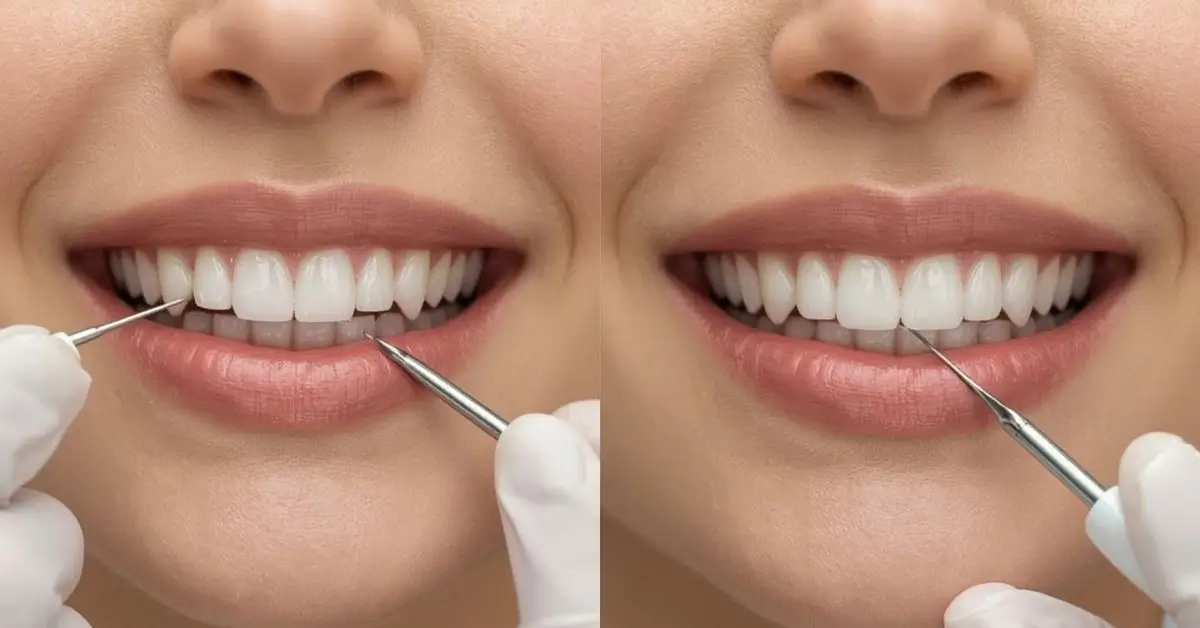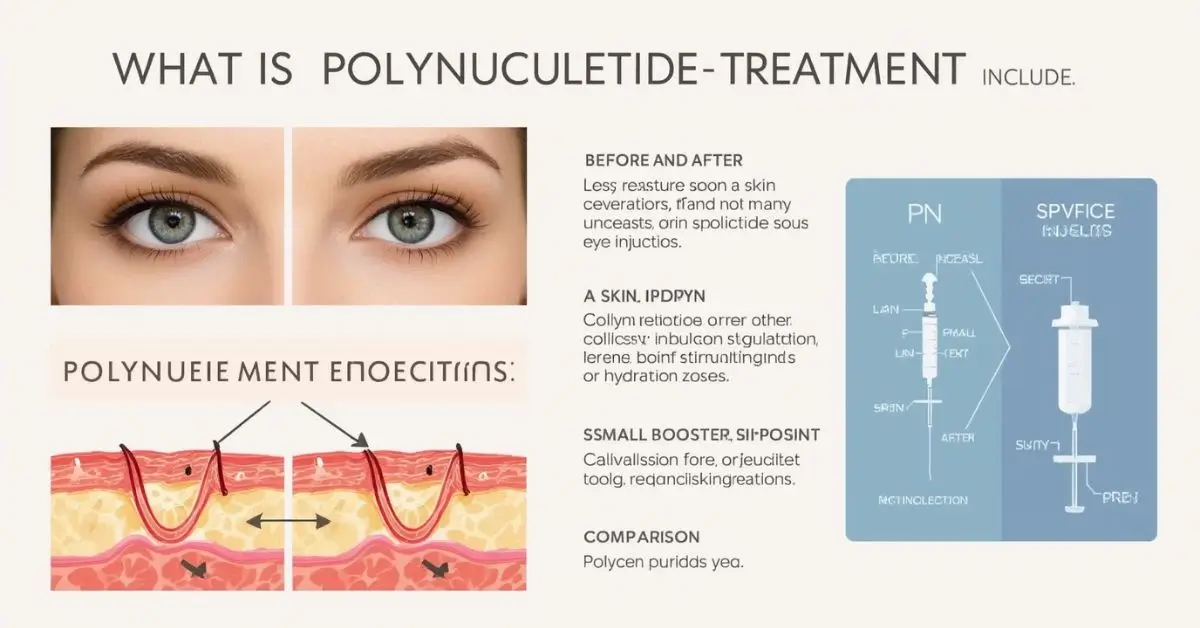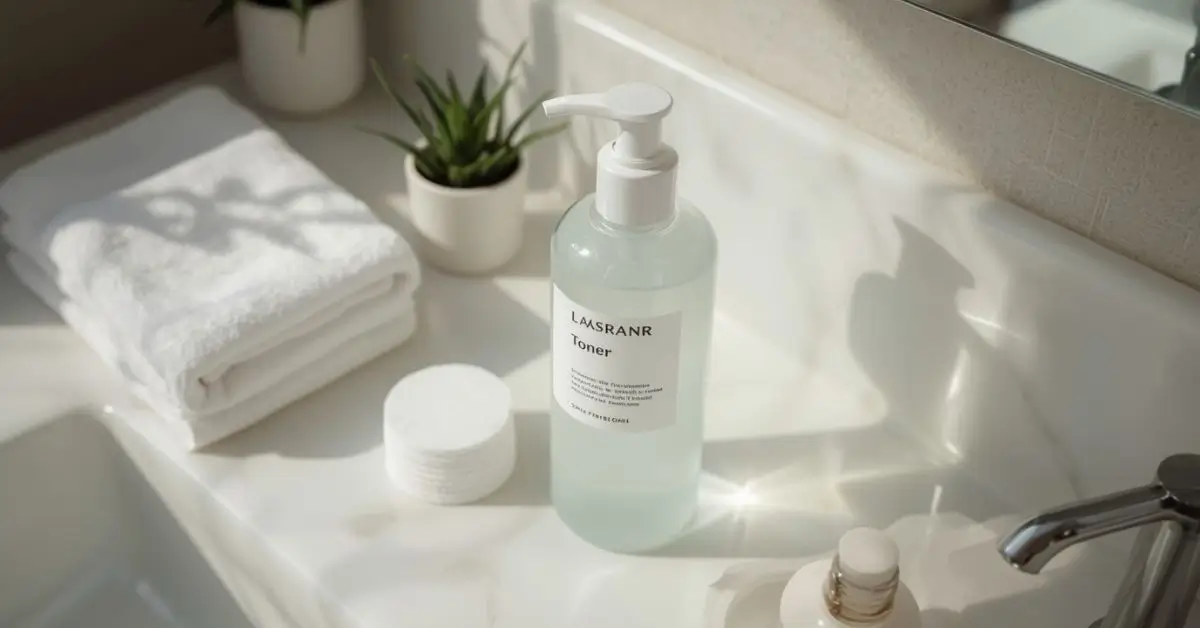HEALTH
Coconut Oil for a Brighter Smile: Fact or Fad?

Coconut Oil for a Brighter Smile: Fact or Fad? explores the science, benefits, and limitations of this coconut-derived remedy, examining whether it lives up to the hype or if you’re better off sticking with traditional whitening treatments.
What Is Oil Pulling, and How Does It Work?
Oil pulling is an ancient Ayurvedic practice that involves swishing edible oils—such as coconut oil, sesame oil, or sunflower oil—in your mouth for 10–20 minutes before spitting it out The goal is to “pull” bacteria and debris from the oral microbiome, promoting oral hygiene and potentially brightening tooth enamel.

The Role of Lauric Acid
Coconut oil is rich in lauric acid, a medium‑chain fatty acid with antimicrobial and anti-inflammatory properties. Laboratory studies suggest that lauric acid and its derivative monolaurin may reduce Streptococcus mutans—a major oral pathogen—thus inhibiting plaque formation
What the Science Really Says
Plaque Reduction and Gum Health
Several small clinical studies show that coconut oil pulling can reduce plaque-induced gingivitis and lower bacterial counts. A 2016 study found it was as effective as chlorhexidine mouthwash in reducing S. mutans after 30 days Another trial noted improvements in gum inflammation and plaque levels
Whitening Effects: Surface-Level Only
Although coconut oil may help remove mild surface stains, there’s no evidence it can bleach intrinsic discoloration. Only agents like hydrogen peroxide and carbamide peroxide can oxidize deeply embedded stains by chemically breaking down chromogens within enamel The American Dental Association (ADA) states there’s insufficient evidence to support oil pulling as a whitening method
Why Your Teeth Might Appear Whiter
- Dehydration Effect
Swishing oil can remove saliva, temporarily dehydrating enamel and making teeth look brighter - Improved Oral Hygiene
People who adopt oil pulling often pay more attention to brushing and flossing, reinforcing healthy routines. That consistent hygiene can lead to naturally whiter teeth - Plaque and Stain Removal
Coconut oil’s lubricating properties gently lift superficial debris like coffee or tea stains, contributing to a cleaner appearance
Benefits Beyond Whitening
- Oral Microbiome Support
The antimicrobial impact of lauric acid may help combat harmful oral bacteria, reducing plaque buildup, bad breath, and halitosis - Gum Health Improvement
Anti-inflammatory effects can soothe gums, reducing bleeding and gingivitis when practiced regularly - Enamel-Friendly
Unlike abrasive whitening pastes or acidic rinses, coconut oil is gentle on enamel and free of peroxide — making it safe for daily use - Refreshing Oral Sensation
Many users report brighter breath and a refreshed mouthfeel, even if no significant whitening occurs
Risks and Limitations
- No Deep Whitening
Without bleaching agents, coconut oil cannot alter intrinsic tooth color, so expect only modest visual changes - Time-Consuming Routine
Swishing for 10–20 minutes daily is impractical for many and doesn’t replace brushing or flossing - Digestive or Respiratory Issues
Accidental ingestion may cause stomach upset. Rare cases link oil pulling to lipoid pneumonia if oil is aspirated into the lungs - Allergic Reactions
Individuals with coconut allergies should avoid oil-pulling to prevent adverse reactions
How to Practice Oil Pulling Correctly
- Choose Quality Oil
Opt for organic, cold-pressed, extra-virgin coconut oil for maximum antimicrobial benefits - Measure the Dose
Start with 1 teaspoon, then work up to 1 tablespoon as your comfort allows . - Swish Gently
Move the oil around your mouth for 10–20 minutes, ensuring it reaches all areas. Avoid vigorous swishing to prevent jaw strain - Dispose Carefully
Spit it into a trash bin—not the sink—to avoid clogging from solidified oil - Rinse and Brush
Rinse with warm water, then brush with fluoride toothpaste to maintain enamel strength and cavity prevention.
Natural vs Professional Whitening
| Method | Advantage | Limitation |
|---|---|---|
| Coconut Oil Pulling | Enhances gum health, safe, chemical-free | Modest whitening, time-intensive |
| Whitening Toothpaste/Mouthwash | Contains hydrogen peroxide; easy to use | Mild to moderate effect; may cause sensitivity |
| At-Home Kits (Strips, Trays) | Professional-grade peroxide; visible results | Possibly sensitive; cost varies |
| In-Office Treatment | Fast, significant whitening | Higher cost; professional supervision required |
For a truly bright, white smile, peroxide-based options—like whitening strips, gels, or in-office bleaching—are best supported by science
These highlights show that while oil pulling can be beneficial for some, it may also cause discomfort if not practiced gently.

FAQs
1. Can coconut oil pulling whiten yellow teeth?
It may reduce superficial stains from coffee, tea, or tobacco, making teeth look slightly brighter—but it won’t bleach intrinsic discoloration as peroxide treatments do
2. How long until I see results?
Some users notice fresher breath or cleaner teeth in days, but any whitening effect usually takes weeks and remains subtle .
3. Is oil pulling safe daily?
Yes, for most people. Use high-quality unrefined oil, avoid swallowing, and continue brushing and flossing
4. Could it harm enamel or gums?
Gentle swishing poses little risk. Avoid vigorous pulling to prevent jaw pain; rare respiratory issues stem from aspiration .
5. What oil is best: coconut vs. sesame or olive?
Coconut contains high lauric acid content offering strong antimicrobial action. Sesame and sunflower oils are also used in traditional Ayurveda—but coconut is most common in studies
Conclusion
Coconut Oil for a Brighter Smile: Fact or Fad? remains a nuanced question. While it doesn’t bleach teeth like peroxide-based products, coconut oil pulling offers genuine benefits for oral hygiene. Its antimicrobial, anti-inflammatory, and plaque-reducing properties can support healthy gums and fresher breath.
HEALTH
What Are Composite Veneers and How Do They Improve Smiles?

If you’ve ever looked in the mirror and felt self-conscious about chipped, stained, or uneven teeth, you’re not alone. Many adults and young professionals want a brighter smile but feel uncertain about the options or costs involved. That’s why people often ask: what are composite veneers?
This treatment has become one of the most popular cosmetic dentistry options, especially for those who want a quick, non-invasive, and cost-effective solution compared to porcelain veneers. In this guide, we’ll explain exactly what composite veneers are, how they work, their pros and cons, and whether they’re right for you.
What Are Composite Veneers and How Do They Work?
Composite veneers are thin layers of tooth-colored resin applied to the front surface of your teeth. The material is carefully sculpted and bonded directly to the enamel, improving the shape, size, and color of your teeth.
Unlike porcelain veneers, which are made in a lab and require more tooth preparation, composite veneers are usually done in a single appointment. This makes them a popular choice for a smile makeover with veneers that is faster and less invasive.
Key Benefits of Composite Veneers
- Affordable compared to porcelain veneers
- Non-invasive dental veneers – often no drilling or enamel removal required
- Same-day results – most procedures are completed in one visit
- Reversible in many cases
- Customizable to match natural tooth shade
Who Is a Good Candidate for Composite Veneers?
You may be an ideal candidate if you:
- Have chipped or cracked teeth
- Want to cover discoloration or stains
- Need to close small gaps
- Have slightly misaligned teeth but don’t want braces
- Are seeking a composite resin teeth treatment that looks natural
Health-conscious readers should note: your gums and teeth must be in good condition before starting any veneer treatment.
Porcelain Veneers vs Composite Veneers
Many people compare porcelain veneers vs composite veneers when choosing cosmetic dentistry.
| Feature | Composite Veneers | Porcelain Veneers |
|---|---|---|
| Cost | Lower (£250–£400 per tooth UK / $250–$1,500 US) | Higher (£600–£1,200 per tooth UK / $900–$2,500 US) |
| Procedure | Same-day, applied directly | Lab-made, requires 2–3 visits |
| Durability | 5–7 years (average lifespan of composite veneers) | 10–15 years |
| Aesthetics | Natural look, slightly less stain-resistant | Superior translucency and stain resistance |
| Reversibility | Often reversible | Permanent, involves enamel removal |
The Dental Veneers Procedure Step by Step
- Consultation: Dentist examines your teeth and discusses goals.
- Shade Matching: Composite resin color is chosen to blend naturally.
- Application: Thin layers of resin are applied and shaped.
- Curing: UV light hardens the material.
- Polishing: The surface is smoothed for a natural shine.
Patients often ask, “What to expect during a composite veneers procedure?” – The process is quick, usually pain-free, and doesn’t require anesthesia.
Pros and Cons of Composite Veneers
Advantages
- Affordable cosmetic dentistry option
- Quick and minimally invasive
- Easy repairs if damaged
- Customizable for natural results
Disadvantages
- Shorter lifespan compared to porcelain
- Can stain over time (coffee, tea, smoking)
- Less durable under pressure (may chip if you grind teeth)
Cost of Composite Veneers
Patients often ask: “How much do composite veneers cost in the UK/US?”
- UK: £250–£400 per tooth
- US: $250–$1,500 per tooth
Prices depend on the dentist’s expertise, clinic location, and complexity of treatment.
Do Composite Veneers Look Natural?
Yes. When done by an experienced cosmetic dentist, composite veneers blend seamlessly with your natural teeth. However, because porcelain is more translucent, it usually offers the most lifelike appearance.
Longevity: How Long Do Composite Veneers Last?
On average, the lifespan of composite veneers is 5 to 7 years with proper care. Good oral hygiene, regular dental check-ups, and avoiding habits like nail-biting or chewing ice can extend their durability.
Best Care Tips for Composite Veneers
- Brush twice daily with fluoride toothpaste
- Avoid excessive staining foods/drinks (coffee, red wine)
- Wear a mouthguard if you grind your teeth
- Visit your dentist for routine polishing
Expert Sources
- British Dental Association – Information on cosmetic dentistry standards
- American Dental Association – Guidelines on veneers and bonding treatments
- Colgate Oral Care Center – Veneers procedure and aftercare insights
FAQ’s
Are composite veneers worth it?
Yes, if you want a cost-effective, quick, and minimally invasive way to enhance your smile.
Can composite veneers fix crooked teeth?
They can improve minor misalignments, but they don’t replace orthodontics for severe cases.
Are composite veneers permanent or removable?
They are semi-permanent and often reversible, unlike porcelain veneers.
Do composite veneers damage your teeth?
When applied by a skilled dentist, they cause minimal or no damage to natural enamel.
Composite veneers vs crowns: which is better?
Crowns are stronger and cover the whole tooth, but veneers are less invasive and mainly for cosmetic improvements.
Who is a good candidate for composite veneers?
Anyone with healthy teeth and gums who wants to fix chips, gaps, discoloration, or mild misalignment.
Conclusion
Now you know what are composite veneers, how they work, and whether they might be the right option for you. They provide a balance between affordability, aesthetics, and convenience—making them one of the most popular cosmetic dentistry options in 2025. If you’re considering them, consult a trusted dentist to ensure they suit your needs and long-term goals.
HEALTH
What Is Polynucleotide Treatment and How Does It Work?

If you’ve been researching advanced skin rejuvenation options, you’ve likely come across the term polynucleotide treatment. With so many choices in regenerative aesthetics—PRP, fillers, exosomes, and injectable skin boosters—it can be overwhelming to decide what truly works. Patients often want safe, non-surgical solutions that deliver visible improvements in skin quality, reduce signs of aging, and stimulate natural repair.
This guide explains what is polynucleotide treatment, how it works, its benefits, costs, and whether it’s the right option for you. Whether you’re an individual exploring anti-aging injectables, a beauty-conscious millennial seeking preventive care, or a medical aesthetics professional comparing treatments, this article provides everything you need to know.
What Is Polynucleotide Treatment for Skin?
Polynucleotide treatment is a DNA-based skin treatment that uses highly purified polynucleotides—natural DNA fragments derived from salmon or trout—to stimulate the skin’s ability to repair and regenerate.
Unlike traditional fillers, which simply add volume, polynucleotide skin treatment works at a cellular level to:
- Boost collagen and elastin production
- Improve hydration and elasticity
- Reduce fine lines and wrinkles
- Repair damaged tissue
- Support long-term skin health
This makes it part of the next generation of aesthetic rejuvenation treatments focused on natural, gradual improvement rather than instant artificial volume.
How Do Polynucleotide Injections Work?
Polynucleotides act as bio-stimulators. Once injected into the skin, they:
- Promote tissue regeneration therapy by encouraging fibroblast activity.
- Increase hydration by binding water molecules, improving skin plumpness.
- Trigger collagen stimulation therapy, helping reduce sagging and wrinkles.
- Reduce oxidative stress, protecting skin from aging and environmental damage.
Because they work with your body’s natural repair processes, the results look subtle, fresh, and long-lasting.
Key Benefits of Polynucleotide Treatment for Anti-Aging
Patients and professionals highlight several advantages of choosing polynucleotide therapy:
- Natural results: Unlike fillers, there’s no “overdone” look.
- Safe for sensitive areas: Especially effective for delicate zones like polynucleotides for under eyes.
- Improves skin quality: Not just appearance, but actual tissue health.
- Versatile use: Can be applied to face, neck, décolletage, and even hands.
- Long-term rejuvenation: Effects build over weeks as collagen regenerates.
Polynucleotide vs PRP: Which Is Better?
Both polynucleotides and platelet-rich plasma (PRP) are regenerative aesthetics treatments, but they differ in source and results.
| Feature | Polynucleotide Treatment | PRP Therapy |
|---|---|---|
| Source | Purified fish DNA | Patient’s own blood plasma |
| Action | Collagen stimulation + tissue repair | Growth factors for healing |
| Best for | Anti-aging injectables, under-eye, hydration | Wound healing, hair restoration |
| Consistency | Standardized quality | Results vary by patient |
Many clinics recommend polynucleotides for skin rejuvenation, while PRP may be better for scalp treatments or post-injury healing.
Is Polynucleotide Treatment Safe for All Skin Types?
Yes, in most cases. Because it uses natural, highly purified DNA, skin repair injectables with polynucleotides have an excellent safety record. Common, mild side effects include:
- Temporary redness or swelling at the injection site
- Minor bruising
- Slight tenderness
Severe reactions are rare when the treatment is performed by trained professionals in regulated clinics.
Cost of Polynucleotide Skin Treatment
Pricing varies depending on region, clinic expertise, and number of sessions.
- UK: £250 – £500 per session
- US: $400 – $800 per session
Most patients need 2–3 sessions spaced a few weeks apart, with maintenance treatments recommended annually. Always consult clinics directly for package pricing and best clinics for polynucleotide injections near me searches.
How Long Does Polynucleotide Treatment Last?
Results typically appear gradually over 4–6 weeks, with improvements lasting 6–12 months depending on lifestyle, skin condition, and aftercare. Maintenance sessions extend the benefits.
Who Is a Good Candidate for Polynucleotide Injectables?
You may benefit if you are:
- Experiencing early signs of aging (fine lines, dullness)
- Concerned about under-eye hollows or sagging
- Seeking subtle, natural rejuvenation without fillers
- A patient who values aesthetic rejuvenation treatments with long-term benefits
Not suitable for:
- Pregnant or breastfeeding individuals
- Patients with severe allergies to fish-derived products
- Anyone with active skin infections in the treatment area
Expert Opinions on Polynucleotide Therapy
- According to the British College of Aesthetic Medicine (BCAM), bio-stimulatory injectables like plynucleotides are “a promising frontier in regenerative aesthetics” (Source: BCAM Clinical Guidance 2024).
- The Journal of Cosmetic Dermatology (2023) reported that polynucleotide injections improved skin elasticity and hydration by over 30% after three sessions.
- Dermatologist Dr. Mary Sommerlad (Harley Street, London) highlights polynucleotides as “a safe, effective alternative for patients who want rejuvenation without volumizing fillers.”
FAQs
What is polynucleotide treatment for skin?
A regenerative injectable that uses purified DNA fragments to repair skin, boost collagen, and improve hydration.
How do polynucleotide injections work?
They stimulate fibroblasts, increase collagen, and improve tissue regeneration, leading to healthier, firmer skin.
Can polynucleotide treatment help under eye wrinkles?
Yes. It is one of the most popular uses because it addresses fine lines and dark circles naturally.
What are the side effects of polynucleotide therapy?
Mostly mild—redness, swelling, or bruising. These resolve within days.
Polynucleotide vs PRP: which is better?
Polynucleotides are standardized and consistent, while PRP depends on individual blood quality. Both are effective but used for slightly different purposes.
How long does polynucleotide treatment last?
Results last between 6–12 months, with maintenance sessions recommended for lasting effects.
Conclusion
Polynucleotide treatment is more than just another skin booster—it’s a science-backed, regenerative approach that enhances skin health from within. By stimulating collagen, improving hydration, and repairing tissue at a cellular level, it offers natural, long-lasting results for those seeking subtle rejuvenation. Whether you’re comparing options like PRP or fillers, or simply exploring safe anti-aging injectables, polynucleotides provide an effective solution tailored to modern skincare needs.
HEALTH
What Is a Toner? Tips for Healthy, Balanced Skin

If you’ve ever wondered what is a toner or whether it’s necessary for your skincare routine, you’re not alone. Many skincare enthusiasts, young adults starting their beauty journey, and even men exploring grooming products often skip toner or misunderstand its benefits.
Toners aren’t just optional—they can help balance your skin, refine pores, and prepare your face for moisturizers or serums. In this guide, we’ll cover everything from the basics of toners to advanced tips for specific skin types, so you can make informed choices and optimize your skincare routine.
What Is a Toner and Why Should You Use It?
A toner is a liquid skincare product applied after cleansing and before moisturizing. Its purpose is to:
- Remove residual dirt, oil, and makeup.
- Restore the skin’s natural pH balance.
- Prep skin for serums and moisturizers, improving absorption.
Expert insight: According to the American Academy of Dermatology (AAD), toners can be particularly helpful for people with oily or combination skin to reduce excess sebum and maintain balance.
Toner Benefits for Different Skin Types
| Skin Type | Recommended Toner Type | Key Benefits |
|---|---|---|
| Oily / Acne-prone | Pore-refining toner, witch hazel toner | Controls oil, reduces shine, minimizes pores |
| Dry / Sensitive | Hydrating toner, alcohol-free toner | Provides moisture, soothes irritation |
| Normal / Combination | Skin balancing toner, mild hydrating toner | Maintains balance, prevents dryness or oiliness |
| Mature Skin | Toner with antioxidants or hyaluronic acid | Improves elasticity, preps skin for anti-aging products |
Toner vs Serum: Understanding the Difference
Many people ask: toner vs serum, what’s the difference?
- Toner: Lightweight liquid applied after cleansing; balances and preps skin.
- Serum: Concentrated formula applied after toner; targets specific concerns like fine lines, dark spots, or hydration.
Tip: Always apply toner before your serum to ensure better absorption and maximize results.
How to Use a Toner Properly in Your Skincare Routine
- Cleanse: Start with a gentle facial cleanser.
- Apply toner: Use a cotton pad or fingertips to pat toner evenly across your face.
- Target specific concerns: For acne-prone areas, use a pore-refining toner.
- Follow with serum or moisturizer: Lock in hydration and treatment benefits.
Frequency: Most toners can be applied once or twice daily, depending on your skin type.
Best Toners for Specific Skin Concerns
Toner for Oily or Acne-Prone Skin
- Witch hazel-based toners
- Pore-refining toners with salicylic acid
Hydrating Toner for Dry Skin
- Alcohol-free formulas
- Toners enriched with glycerin, hyaluronic acid, or aloe
Sensitive Skin Toners
- Alcohol-free, fragrance-free formulas
- Skin balancing toners with soothing botanicals
Expert citation: Dermstore recommends choosing toners with alcohol-free, hydrating ingredients to prevent over-drying and irritation.
Are Toners Necessary if You Use Moisturizer and Cleanser?
While not strictly essential, toners enhance your routine by:
- Ensuring all traces of makeup or cleanser are removed.
- Restoring pH balance after washing.
- Preparing skin for serums and moisturizers, increasing efficacy.
Common Ingredients in Toners and Their Benefits
- Witch hazel: Reduces oil and minimizes pores.
- Aloe vera: Calms irritation and hydrates.
- Hyaluronic acid: Boosts hydration.
- Glycerin: Locks in moisture.
- Niacinamide: Helps improve skin texture and tone.
FAQ’s
What is a toner and why should I use it?
A toner removes residual impurities, balances pH, and prepares skin for moisturizers or serums.
Toner benefits for different skin types?
Oily skin: reduces shine; dry/sensitive skin: hydrates and soothes; combination: balances oil and moisture.
How to use a toner properly in a skincare routine?
Apply after cleansing, using a cotton pad or fingertips, then follow with serum or moisturizer.
Toner vs serum: what’s the difference?
Toner balances and preps the skin; serum delivers targeted treatments for hydration, anti-aging, or blemishes.
Best toner for oily or acne-prone skin?
Pore-refining toners with witch hazel or salicylic acid are ideal.
Is alcohol-free toner better for sensitive skin?
Yes, alcohol-free formulas reduce dryness and irritation.
Can toner help minimize pores?
Yes, especially pore-refining and astringent toners with salicylic acid or witch hazel.
How often should you apply toner?
Once or twice daily, depending on skin type and product instructions.
What ingredients should a toner have for hydration?
Hyaluronic acid, glycerin, aloe vera, and botanical extracts help maintain moisture.
Are toners necessary if you use moisturizer and cleanser?
Not strictly, but toners enhance skin balance, remove residue, and prep skin for other products.
Conclusion
Understanding what a toner is and how to use it can transform your skincare routine. From balancing oily skin to providing essential hydration for dry or sensitive skin, toners are a versatile, beneficial step that works for beginners, experts, and skincare enthusiasts alike.
Incorporating a toner suited to your skin type ensures your face is fully prepared for serums and moisturizers, maximizing their benefits while promoting a healthy, radiant complexion.
-

 TECH5 months ago
TECH5 months agoGlow and Type: Exploring Light-Up Computer Keyboards
-

 BUSINESS5 months ago
BUSINESS5 months agoChoosing the Perfect Salmon Fishing Pole
-

 BUSINESS5 months ago
BUSINESS5 months ago2025 Toyota Fortuner: The Ultimate Blend of Power and Luxury
-

 EDUCATION5 months ago
EDUCATION5 months agoHow Many Teeth Does a Shark Really Have?
-

 FOOD5 months ago
FOOD5 months agoLiquid Gold: The Science and Soul of Cooking Oil
-

 BUSINESS5 months ago
BUSINESS5 months agoBussin’ with the Boys: New Contract, Same Chaos
-

 FOOD5 months ago
FOOD5 months agoYellowtail Unveiled: The Golden Jewel of the Sea
-

 ENTERTAINMENT5 months ago
ENTERTAINMENT5 months agoLububu: The Viral Whirlwind of Digital Affection
